À chaque savoir-faire son vocabulaire
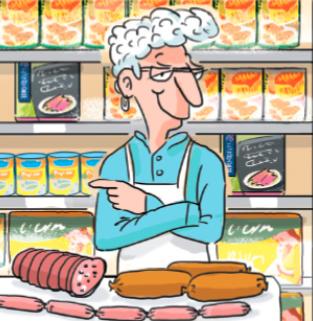 The refiner
The refiner
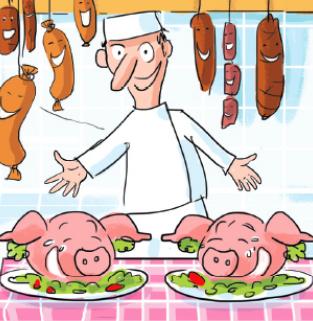 The butcher
The butcher
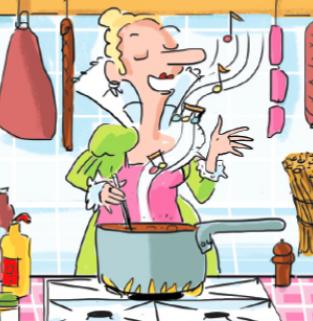 The charcutier
The charcutier
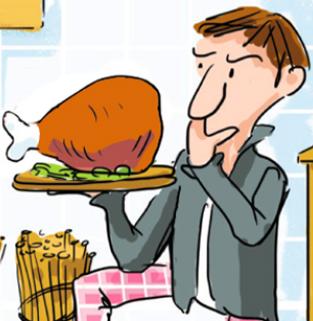 The roaster
The roaster
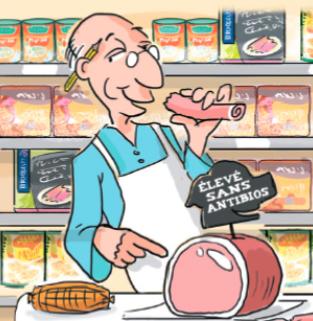 The curer
The curer
The refiner
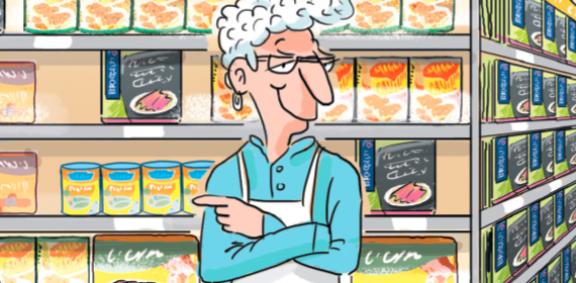
Tradition
Product produced with fresh ingredients; the raw materials used must not have been subject to any processing other than refrigeration.
Tying
Tying refers to the reinforcement of the casing by the string or an elastic mesh. It is mainly used on large cuts.
Pork chaudin
Brocéliande sausages are stuffed in natural casings. Pork chaudin is a part of the pork gut, used in particular for stuffing dry sausages.
Dessication
Dessication is a term which refers to the loss of water from the sausage after drying.
Stuffing
The paste constituting the sausages is pushed into a casing before being sent to the dryer and then to ripening (for dry sausages) or cooking (for sausages cooked with garlic).
Drying
Successful maturation of the sausage occurs thanks to the drying: a rise in the storage temperature (23-25 °C for 24 to 48 hours depending on the size of the sausages). The aim of this step is to "wake up" the microbial flora in order to start the ripening.
Bloom
The stuffed product is sprayed with a mixture of penicillin, which grows on the casing during maturation. This is the flora which gives a sausage its so characteristic taste, and its long shelf life. Like Camembert, which has a flora called penicillium camembertii, during the ripening the sausage puts on a beautiful white cloak, covering its surface.
Meat mass
A meat mass is a mixture of minced lean and fat meat, with added herbs and spices, worked in a kneading machine before being stuffed.
Pork small intestine
Brocéliande sausages are stuffed in natural casings. The pork small intestine is a part of the pork gut, used in particular for the stuffing of dry sausages.
Rosette
The rosette designates a natural port casing in the shape of a spindle, intended for high-quality pieces of dry sausage.
The butcher
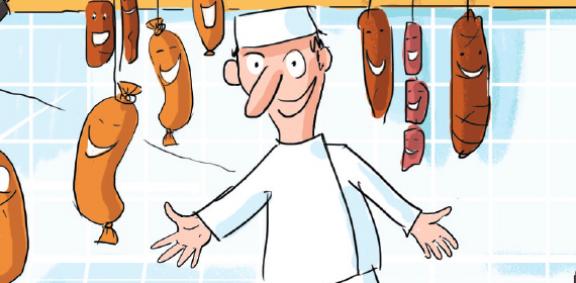
Tradition
Product produced with fresh ingredients; the raw materials used must not have been subject to any processing other than refrigeration.
The charcutier

Tradition
Product produced with fresh ingredients; the raw materials used must not have been subject to any processing other than refrigeration.
Crépine
Caul fat, also known as crépine, is the peritonium of the pig. This is a fine membrane, used in charcuterie in cooked form, to hold the minced meat in place, particularly in terrines.
The roaster
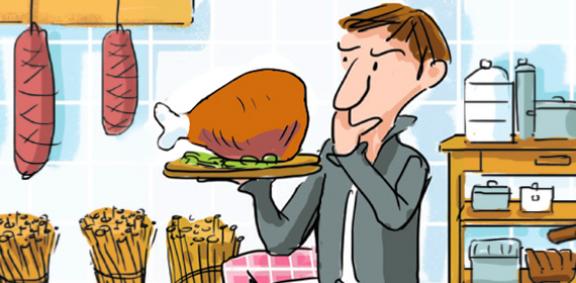
Churning
This is the step which follows brining. It is required in order to impregnate the brine into the meat At the end of the step, the texture is sticky which guarantees good retention of the slice.
Rind removal
In the case of a ham without rind, the skin (known as rind) as well as the upper layer of fat is removed from the pig to leave only the ham.
Deboning
This is quite simply the step which aims to remove the bone from a piece of meat. In the case of ham, the bone is removed from the femur and hock to facilitate slicing of the product.
Browning
When sold sliced in the chilled packaged aisle, our rotisserie products undergo a browning step. A grill gives the surface of the product a fine, crispy and tasty crust. You then only have to place the product in the microwave in order to achieve an out-of-the-oven finish.
Moulding
This step produces a salted product in the desired shape at the end of cooking. Rather like a cake mould, we place the meat in the mould before cooking.
Trimming
Trimming involves removing the fatty parts and nerves from the meat, leaving only the lean meat. Trimming work is very important in order to leave only the best meat, particularly in products such as ham.
Brining
Brining is the step where the meat receives brine by injection or soaking. The brine gives the ham its flavour. It may be specific to a product.
The curer
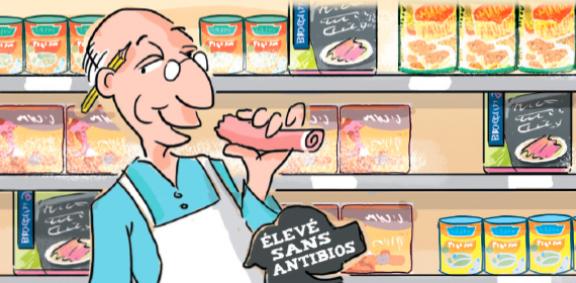
Tradition
Product produced with fresh ingredients; the raw materials used must not have been subject to any processing other than refrigeration.
Churning
This is the step which follows brining. It is required in order to impregnate the brine into the meat At the end of the step, the texture is sticky which guarantees good retention of the slice.
Tying
Tying refers to the reinforcement of the casing by the string or an elastic mesh. It is mainly used on large cuts.
Cooking in a broth
The product is cooked in a broth, seasoned with herbs and celery for example.
Cooking in a cloth
The ham (or any other product cooked in a cloth) is shaped in the cloth, or wrapped with strips, linen, net or textile sack. It is then cooked in broth. This is what gives it its distinctive flavour. The cloth (or textile) delicately marks the surface of the meat, giving a ham that you will doubtless recognise in your shopping aisle.
Rind removal
In the case of a ham without rind, the skin (known as rind) as well as the upper layer of fat is removed from the pig to leave only the ham.
Gouging
The gouging step consists of detaching the muscles from the bone of the ham, using a spatula known as a "gouge". This facilitates the removal of the bone during slicing in store.
Deboning
This is quite simply the step which aims to remove the bone from a piece of meat. In the case of ham, the bone is removed from the femur and hock to facilitate slicing of the product.
Moulding
This step produces a salted product in the desired shape at the end of cooking. Rather like a cake mould, we place the meat in the mould before cooking.
Trimming
It involves removing the fatty parts and nerves from the meat, leaving only the lean meat. Trimming work is very important in order to leave only the best meat, particularly in products such as ham.
Brining
Brining is the step where the meat receives brine by injection or soaking. The brine gives the ham its flavour. It may be specific to a product.